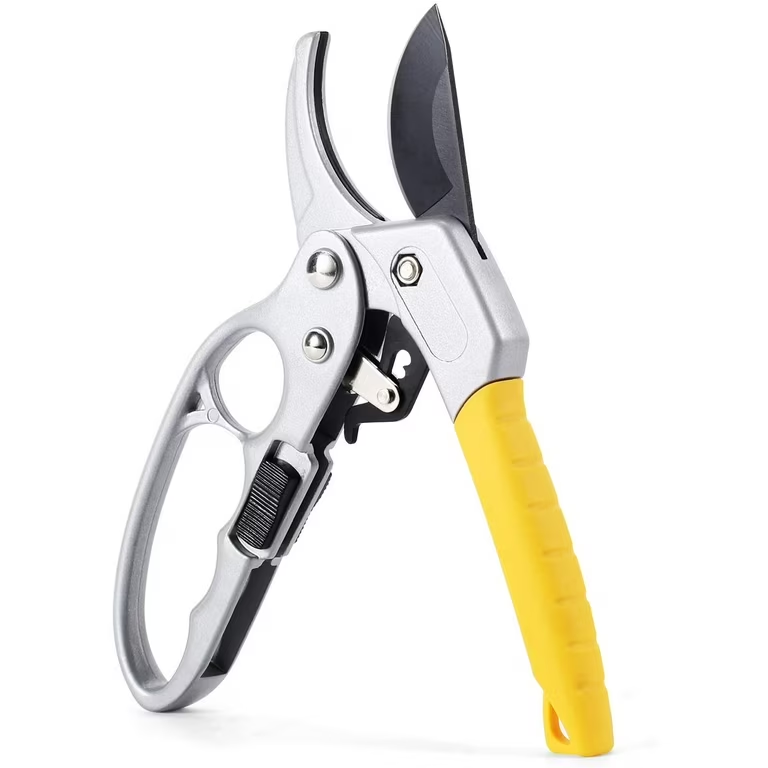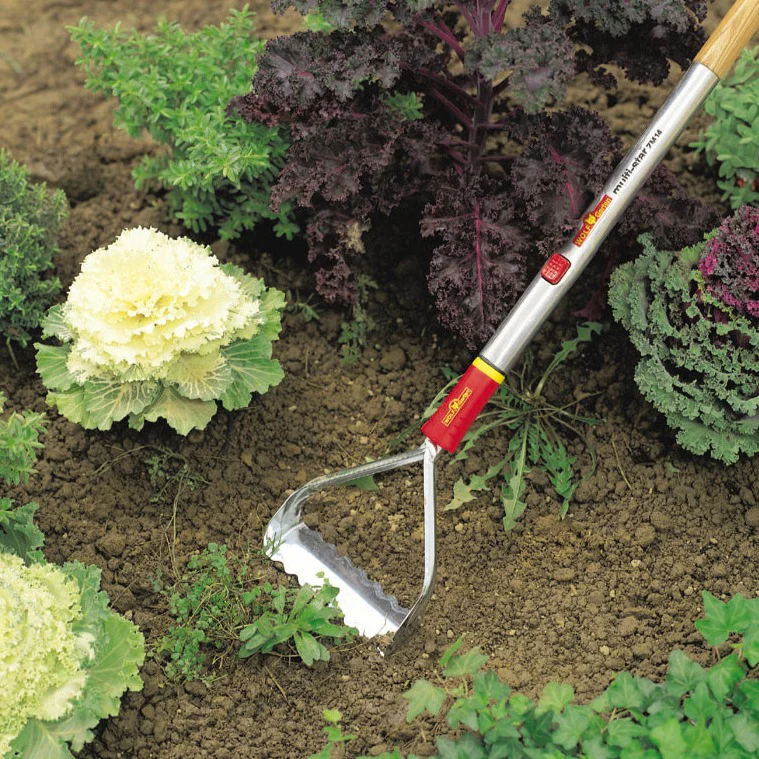
Plant Clippers: Cultivating Precision in Your Garden
Understanding the Importance of Plant Clippers
Plant clippers serve as indispensable tools for gardeners, horticulturists, and plant enthusiasts alike. These precision instruments enable gardeners to shape, maintain, and nurture their green spaces with accuracy and care. The significance of plant clippers extends beyond mere pruning; they play a crucial role in promoting plant health, encouraging growth, and maintaining the aesthetic appeal of gardens and indoor plant collections. By facilitating the removal of dead, damaged, or diseased plant material, clippers contribute to the overall vitality of plants and help prevent the spread of infections.
Moreover, the proper use of plant clippers can significantly influence the structure and form of plants, allowing gardeners to guide growth patterns and create desired shapes. This level of control proves particularly valuable in landscape design, bonsai cultivation, and the maintenance of ornamental plants. As gardening continues to gain popularity as both a hobby and a profession, the demand for high-quality plant clippers has surged. Manufacturers have responded by developing a wide range of clipper styles and sizes, each designed to address specific plant care needs and accommodate various plant types.

Types of Plant Clippers and Their Specific Uses
The world of plant clippers offers a diverse array of tools, each tailored to specific gardening tasks. Bypass pruners, characterized by their scissor-like action, excel at making clean cuts on live, green growth. These versatile tools prove ideal for general pruning tasks and work well on stems up to about 3/4 inch in diameter. In contrast, anvil pruners utilize a straight blade that cuts against a flat surface, making them particularly effective for deadwood and tougher, dry stems. While bypass pruners offer precision, anvil pruners provide the force necessary for more challenging cuts.
For larger branches, loppers come into play. These long-handled tools provide increased leverage, allowing gardeners to tackle branches up to 2 inches thick. Pruning saws further extend the range of cutting capabilities, enabling the removal of even larger limbs with their serrated blades. Specialized clippers, such as topiary shears and bonsai pruners, cater to more niche gardening practices, offering the precision required for intricate shaping and detailed work. Understanding the strengths and limitations of each type of clipper empowers gardeners to choose the right tool for every task, ensuring optimal plant care and garden maintenance.
The Anatomy of Quality Plant Clippers
High-quality plant clippers consist of several key components that contribute to their performance and durability. The blades, typically made from hardened steel, form the heart of the tool. Premium clippers often feature high-carbon steel blades known for their sharpness and resistance to wear. The cutting mechanism, whether bypass or anvil, determines the clipper’s cutting action and suitability for different types of plant material. Many professional-grade clippers incorporate tension-adjusting systems, allowing users to fine-tune the tool’s performance based on the task at hand.
Ergonomic handles play a crucial role in user comfort and efficiency, especially during extended pruning sessions. Materials such as aluminum, fiberglass, or high-grade plastics offer a balance of strength and lightweight comfort. Some manufacturers incorporate shock-absorbing features or cushioned grips to reduce hand fatigue. Safety features, including blade locks and non-slip grips, enhance user protection and tool security. Additionally, the overall build quality and material choices significantly influence the clipper’s lifespan and ability to withstand frequent use in varying environmental conditions.

Maintaining and Caring for Plant Clippers
Proper maintenance of plant clippers ensures their longevity and optimal performance. Regular cleaning after each use prevents the buildup of sap, dirt, and potential pathogens that can compromise the tool’s functionality and hygiene. A simple solution of warm water and mild soap, followed by thorough drying, suffices for routine cleaning. For more thorough disinfection, particularly after pruning diseased plants, a diluted bleach solution or rubbing alcohol effectively sanitizes the blades.
Sharpening the blades periodically restores their cutting efficiency and reduces the effort required to make clean cuts. While professional sharpening services offer precision, many gardeners opt to maintain their clippers at home using sharpening stones or specialized tools designed for the purpose. Applying a light coat of oil to the blades and moving parts protects against rust and ensures smooth operation. Proper storage in a dry environment, preferably in a protective sheath or case, guards against environmental damage and accidental injuries. By incorporating these maintenance practices into their gardening routine, enthusiasts can significantly extend the life of their plant clippers and maintain their performance over time.
Choosing the Right Plant Clippers for Your Needs
Selecting the appropriate plant clippers involves considering several factors, including the types of plants in your garden, the frequency of use, and personal preferences. For general household plant care and light pruning tasks, a quality pair of bypass pruners often suffices. Gardeners working with a variety of plant sizes might benefit from a set that includes both hand pruners and loppers to cover a broader range of cutting diameters. Those focusing on specific gardening niches, such as bonsai or topiary, should invest in specialized tools designed for precision work.
Comfort plays a significant role in the selection process, especially for those who engage in extended pruning sessions. Testing different models to assess hand fit and ease of use can prevent discomfort and potential strain injuries. Additionally, considering the build quality and warranty offerings helps ensure a worthwhile investment in tools that will serve your gardening needs for years to come. For professionals or serious hobbyists, investing in premium, professional-grade clippers often proves cost-effective in the long run due to their durability and superior performance. Ultimately, the right choice balances functionality, comfort, and value to enhance the gardening experience.

The Impact of Plant Clippers on Plant Health
Proper use of plant clippers significantly contributes to overall plant health and vitality. Clean, precise cuts minimize damage to plant tissues, reducing the risk of infection and promoting faster healing. When gardeners remove dead, diseased, or crossing branches, they improve air circulation and light penetration within the plant canopy. This practice not only enhances the plant’s appearance but also creates an environment less conducive to pest infestations and fungal growth. Regular pruning with quality clippers stimulates new growth, encourages blooming in flowering plants, and helps maintain the desired shape and size of shrubs and trees.
Furthermore, the strategic use of plant clippers in training young plants can influence their long-term structure and health. By selectively pruning to promote strong branch attachments and balanced growth, gardeners can cultivate resilient plants less prone to storm damage or structural failures. In fruit trees and vegetable gardens, judicious pruning with appropriate clippers can increase yield and fruit quality by directing the plant’s energy towards productive growth. The precision offered by well-maintained clippers allows for the removal of water sprouts, suckers, and other undesirable growth that might otherwise divert resources from the plant’s primary functions.
Innovative Features in Modern Plant Clippers
As gardening technology advances, plant clippers have evolved to incorporate innovative features that enhance their functionality and user experience. Ratcheting mechanisms in some pruners and loppers multiply the user’s hand strength, making it easier to cut through thicker branches with less effort. This feature proves particularly beneficial for those with limited hand strength or when tackling tough pruning jobs. Ergonomic designs continue to improve, with some models offering rotating handles that reduce wrist strain during repetitive cutting motions.
Some manufacturers have introduced electric or battery-powered pruners, catering to professional landscapers and gardeners with extensive pruning needs. These tools can significantly reduce fatigue during long work sessions and provide consistent cutting power. Additionally, advancements in material science have led to the development of ultra-lightweight yet durable alloys for clipper construction, further reducing user fatigue. Smart features, such as sap grooves that channel sticky residues away from the cutting blade, demonstrate how even small innovations can make a noticeable difference in the tool’s performance and maintenance requirements.

The Environmental Impact of Plant Clippers
The use of plant clippers contributes to sustainable gardening practices by promoting healthy plant growth and reducing the need for chemical interventions. Proper pruning enhances plants’ natural defenses against pests and diseases, potentially decreasing reliance on pesticides and fungicides. Additionally, the precise cuts made by quality clippers minimize plant stress and support efficient resource allocation within the plant, contributing to overall ecosystem health in gardens and landscapes.
However, the production and disposal of plant clippers also carry environmental considerations. Many manufacturers now focus on creating durable tools designed for long-term use, reducing the frequency of replacements and associated waste. Some companies have begun exploring eco-friendly materials for handles and packaging, such as recycled plastics or biodegradable alternatives. Consumers can contribute to sustainability efforts by choosing high-quality, long-lasting clippers and properly maintaining them to extend their lifespan. Furthermore, responsible disposal or recycling of old clippers, particularly those with metal components, helps minimize the environmental footprint of these essential gardening tools.
The Future of Plant Clippers in Horticulture
As gardening practices continue to evolve, the future of plant clippers promises exciting developments. Research into biomimicry may lead to clipper designs inspired by nature, potentially offering even more efficient and plant-friendly cutting mechanisms. Advancements in materials science could result in blades that maintain their sharpness for longer periods or self-sharpening edges that reduce maintenance requirements. Integration of smart technology might introduce clippers with sensors that provide real-time feedback on cutting force or plant health, assisting gardeners in making informed pruning decisions.
The growing interest in urban gardening and indoor plant cultivation may drive the development of more compact, versatile clippers suited for small-space gardening. As sustainability remains a key concern, future clipper designs may increasingly incorporate recycled or biodegradable materials, reflecting a commitment to environmental stewardship. Additionally, the rise of precision agriculture could see the adaptation of high-tech pruning tools for commercial use, potentially influencing innovations in consumer-grade clippers. These advancements, coupled with ongoing research into plant biology and horticultural practices, will likely shape the next generation of plant clippers, further enhancing their role in cultivating healthy, beautiful green spaces.
In conclusion, plant clippers stand as essential tools in the gardener’s arsenal, offering precision, control, and care in plant maintenance. From promoting plant health to shaping landscapes, these versatile instruments play a crucial role in both amateur and professional horticulture. As technology advances and gardening practices evolve, plant clippers continue to adapt, incorporating innovative features and sustainable designs. By understanding the various types of clippers, their proper use, and maintenance, gardeners can harness the full potential of these tools to nurture their green spaces effectively. Whether tending to a small indoor collection or managing expansive outdoor landscapes, quality plant clippers remain indispensable companions in the pursuit of horticultural excellence.

